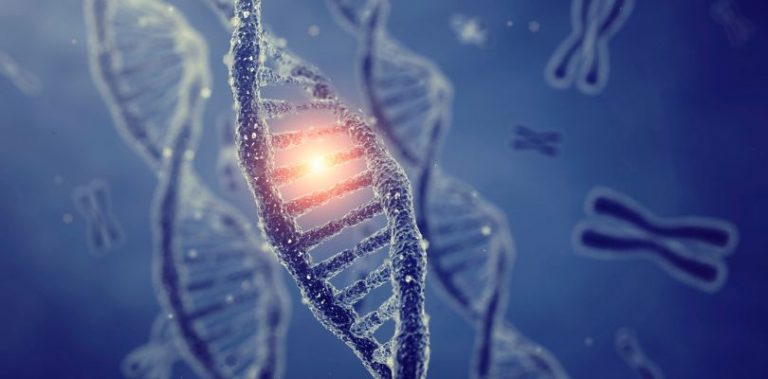Unlocking the Secrets
Hereditary Angioedema (HAE) is a rare genetic disorder that can cause sudden and severe swelling in various parts of the body. It is essential to be aware of the warning signs associated with HAE to ensure timely diagnosis and appropriate management. In this article, we will look at the warning signs of HAE, what HAE is and what causes it, its different types, and some common myths associated with this disorder. We will also explore treatments and coping strategies for HAE, including Takhzyro as a medication prescribed for the prevention of hereditary angioedema (HAE) attacks in individuals aged 2 years and above.
Warning Signs of Hereditary Angioedema
Signs and symptoms of HAE are dependent on which area of the body is being affected. Here are some common warning signs.
1. Swelling in Hands and Feet
Individuals with HAE may experience sudden swelling in the hands and feet, which can be accompanied by pain and discomfort.
2. Swelling of Lips or Eyelids
Another common warning sign is the swelling of the lips or eyelids, which can occur unpredictably and progress rapidly.
3. Swelling of Throat or Larynx
Severe cases of HAE can lead to swelling in the throat or larynx, posing a serious risk to breathing and necessitating immediate medical attention.
4. Nausea and Vomiting
HAE episodes may be accompanied by nausea and vomiting, further complicating the overall experience for individuals with this condition.
5. Acute Abdominal Pain
Abdominal symptoms, such as acute pain, are common in HAE and can indicate a blockage in the digestive tract due to swelling.
6. Difficulty Swallowing
Swelling in the throat can result in difficulty swallowing, adding to the complexity of HAE symptoms.
7. Difficulty Speaking
Swelling in the mouth and throat can also lead to difficulty speaking, affecting communication during an episode.
8. Stridor
Stridor, or a high-pitched sound heard during breathing, can occur in severe cases when the airway is compromised due to swelling.
Understanding Hereditary Angioedema
Hereditary Angioedema is a genetic disorder caused by a deficiency or dysfunction of C1-esterase inhibitor (C1-INH), a protein involved in regulating inflammation. The condition is hereditary, meaning it is passed down through families. HAE is triggered by various factors, including stress, trauma, infections, hormonal changes and certain medications.
Types of Hereditary Angioedema
There are three main types of HAE:
- Type I: Characterized by a deficiency of C1-INH protein.
- Type II: Involves the presence of dysfunctional C1-INH protein.
- Type III: This type is estrogen-dependent and primarily affects women.
Each type has distinct characteristics, but they all share the common feature of recurrent, unpredictable swelling episodes.
Common Myths About Hereditary Angioedema
There is a lot of misunderstanding regarding HAE. Here are some common myths with correct explanations.
- HAE is an allergic reaction: HAE is not an allergic reaction; it is a genetic disorder involving the immune system.
- Episodes are predictable: Unlike allergic reactions, HAE episodes are unpredictable and can occur without an apparent trigger.
- Only the skin is affected: While skin swelling is common, HAE can also involve internal organs and mucous membranes, posing more severe risks.
Treatments for Hereditary Angioedema
Several treatment options are available for managing HAE episodes.
- C1-esterase inhibitors: These replace the deficient or dysfunctional C1-INH protein, reducing the severity and duration of attacks.
- Bradykinin B2 receptor antagonists: These medications block the effects of bradykinin, a key player in the swelling process.
- Kallikrein inhibitors: Targeting the kallikrein-kinin system, these inhibitors help prevent excessive bradykinin production.
- Steroids: In some cases, corticosteroids may be prescribed to help control inflammation.
- Fresh Frozen Plasma (FFP): FFP contains C1-INH and can be used to supplement the deficient protein during an acute attack.
- Takhzyro: Takhzyro (lanadelumab) is a medication used for the prevention of hereditary angioedema (HAE) attacks in individuals aged 2 years and older. It is a monoclonal antibody, a type of biologic drug that targets specific components in the body's immune system responsible for causing HAE.
Coping with Hereditary Angioedema
Living with HAE requires a proactive approach that involves education, avoiding triggers, recognizing emergencies and having a support system. Here are some tips on how to cope with this disorder.
- Education: Understanding the condition is crucial for effective management. Knowing the warning signs, what triggers HAE and what treatment methods are effective are all key components to coping with the disorder.
- Avoiding triggers: Identifying and avoiding triggers can help minimize the frequency and severity of attacks.
- Emergency action plan: Having a well-defined plan for managing acute episodes is essential. Consider consulting with healthcare providers when developing an action plan.
- Support system: Building a support system, including healthcare professionals and loved ones, is crucial for emotional and practical assistance.
Cracking the Code of Hereditary Angioedema
Hereditary Angioedema is a complex and challenging condition that requires a comprehensive approach to management. By recognizing warning signs, understanding the causes, debunking myths, exploring treatment options and adopting coping strategies, individuals with HAE can lead fulfilling lives while effectively managing their condition. Early diagnosis and ongoing medical support are key to achieving optimal outcomes for those affected by this rare genetic disorder.
Read on to learn more about an ITP blood disorder.

